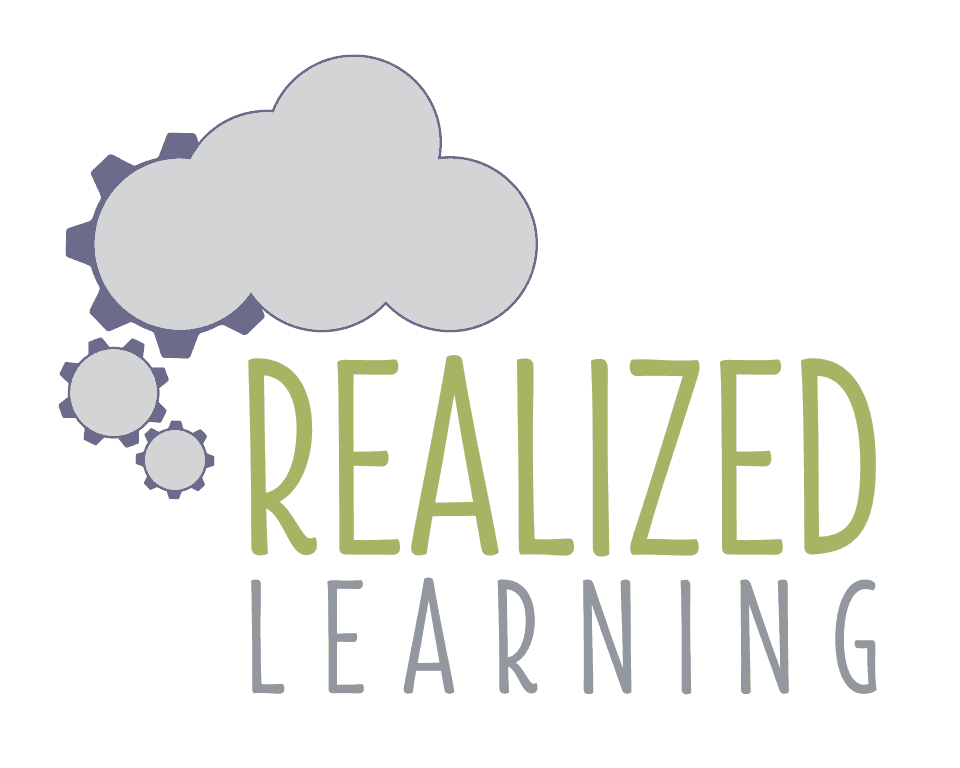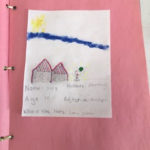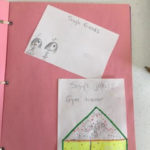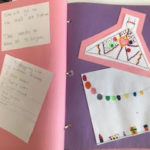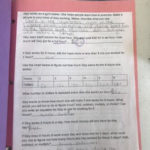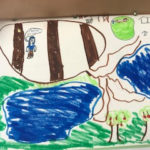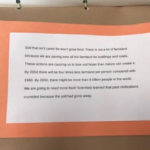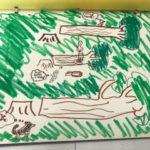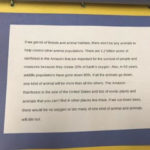I’ve just returned from an absolutely magical month away in Oaxaca, Mexico. Strangely enough, I don’t feel the typical depression that many folks feel when they return home from a long vacation, especially when home is a windy, snowy/rainy tundra (I’m minorly exaggerating; I live in the Northeast). Maybe it’s because I have such amazing friends and family here, or maybe it’s because I love my job. It’s definitely not because I love snow.
I went to Mexico for a few reasons other than just wanting a vacation. I detailed my reasons in the blog post I wrote before I left. For one, I did learn Spanish. I’m not fluent, but my restaurant Spanish is pretty solid, and I can at least sort of joke around (mostly in a self-deprecating way regarding my poor Spanish). Having had zero Spanish before I left other than what Duolingo provided me, I feel like I made progress.
I did step out of my comfort zone. Living in Oaxaca was very different from my usual day to day. I spent two weeks on the coast in a hippie beach town called Mazunte. Then I spent four days in the absolutely stunning mountains of San Jose before moving on to the city of Oaxaca. The cultures of the places I spent time in are very different from the culture of western Massachusetts, and really the Northeast in general. I had to learn to do things a little differently. For one, I constantly needed to call upon my patience. Things are just done more slowly. Restaurant service was painfully slow, but once you become accustomed, you just plan ahead. It’s not uncommon for your server to completely forget to bring a drink or some other item you’ve asked for. I also learned very quickly that the check is not brought to you unless you ask for it (that first time was a long wait). It’s not just service that takes longer. In Oaxaca, many of the beautiful things that I experienced were created by hand. Food is made from scratch, textiles are woven by hand, ceramics are made by generations of women working under one roof carefully adding the right amount of water to the clay they had just dug out of the ground, and care is put into these things. Yes, they take time. But the finished product is something to marvel at.
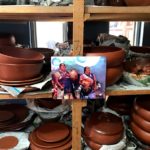
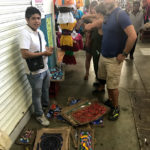

I also had to dig deep and find an inner calmness that I didn’t know was there. It can be very challenging trying to travel from place to place, order food when you have food sensitivities, fulfill basic needs, and get medical care when you aren’t fluent in a language. This was all definitely out of my comfort zone. I had to trust in my ability to convey that I cannot eat a certain kind of food, only to find out that’s exactly what I’d been served. I was sick on more than one occasion. At one point, due to a communication blunder, we had to stop a bus driver and get off the bus because we realized that once we left town, we would be 3 hours from the nearest ATM and we had no cash. We certainly dodged a bullet there, although the driver was less than pleased! I also didn’t have drinking water at my fingertips. I had to go out and buy it and remember to make sure I had stocked up before the end of the night for drinking and brushing my teeth. We had to be so vigilant about bug spray and making sure the mosquito netting was closed over our bed at night for fear of being eaten alive or worse, contracting Dengue Fever, a mosquito-borne illness (which my boyfriend ended up getting by the way). All of these things required me to be alert, plan ahead, and remain calm. But I managed to travel safely and enjoy myself, just like so many other travelers do every day. I met so many people who were doing the same thing, and some for even longer. I met people who had been traveling South and Central America for three months already and this was their day to day. It encouraged me to look at these mishaps as just part of traveling and learning.


I can say for sure that I had an adventure. To me adventuring means there’s a large part of your trip that is left unplanned. The only thing we knew is that we would be on the coast, in the mountains, and in the city for some amount of time. The details were yet to be seen. During our time on the coast, we met up with a friend from Massachusetts who lives in Oaxaca nine months of the year. The remaining three months she is a chef on Martha’s Vineyard. So as you might have guessed, we had some pretty amazing food endeavors with her! She was super helpful in pointing us in the right direction for not-to-be-missed experiences, one of which was a boat tour where we got to see turtles and dolphins as well as snorkel in a cove. Because of that simple connection with the tour guide who also owns a local restaurant in San Agustinillo, Restaurante Alejandra, we were one of the first people called when the turtles were coming ashore to lay their eggs, a once-a-year event. We showed up to the secluded beach to see thousands of turtles coming ashore and bobbing in the waves. These were the kinds of escapades that characterized our entire trip. We would meet someone who was really interesting, and they would tip us off to the next amazing experience we never expected to have.






Our adventure unfolded in this way, leading us to a beautiful mountain top yoga retreat three hours into the San Jose Mountains where all the food served was grown right there and the layers of purple misty mountains lead me down trails that were clinging to the sides of cliffs.




From there we caught a ride with a New Yorker heading eastward into Oaxaca City to seek medical care for my boyfriend Josh who contracted Dengue Fever. Once in the city and after getting the help we needed, Josh rested up while I set off exploring. An artist from Mexico City I met at our hostel pointed me towards Mercado 20 de Noviembre, lush and full of smells, sounds, and sights I’ve never encountered. It offered the most beautiful textiles I’ve ever seen, fresh food, and more.





The colonial architecture of the city was equally interesting. We saw Zapotec, Mixteca, and Aztec ruins that had been overtaken by conquistadors lusting after gold and land. It was not uncommon for the conquistadors to steal gold from these indigenous cities as well as stones to build their churches atop temples and indigenous architecture. I saw a church plopped right on top of an Aztec “pyramid”.






I had the opportunity to visit some villages surrounding the city and watch ceramics being made by hand. The women who graciously welcomed us into their compound showed us how they mold the clay. One woman was digging lines into the pottery with a special stone her mother had given her which had been passed down over generations. One of the ceramicists offered to take us to her home down the road and introduce us to her parents and sister who were sitting outside and sifting corn. It was very humbling. We visited Hierve el Agua, a natural calcium buildup that lead to the formation of beautiful mineral water pools on the side of a mountain as well as one of the two petrified waterfalls in the world. The views were stunning and the town we drove through to get there is a self-governing town, given permission to run themselves from the government of Mexico. They build and repair their own roads, have businesses, and make decisions as a community. The natural tourist attraction that is Hierve el Agua allows the town to profit and use the money to build their community.

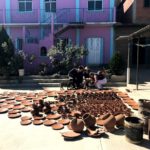



I even went to a lucha libre wrestling match where the main event was Japan vs. Mexico. Don’t be fooled. This wasn’t a major show in a stadium of any sort. It was a wrestling ring thrown together in an abandoned lot in a neighborhood on the outskirts of the city. It was awesome. The costumes and masks were a sight on their own. There were tiny men flipping and throwing gigantic opponents across the ring and even into the crowd. There were female wrestlers, which I hadn’t expected, and three men who came in from Japan to be a part of this event. The trash talking was plentiful, as were the laughs.






Throughout all of this, I ate very well. The food in Oaxaca is delicious. I went to so many restaurants and street vendors, tasting my way around the city. One of my favorite classic Oaxacan dishes is Alambres, a fry up of ham, onions, peppers, and another meat of your choice, served with fresh, warm tortillas. The moles I tasted were thick, warmly spiced, and intensely flavorful. I brought some back home to make on my own! Then there was the market food. You could walk into the market, choose your cut(s) of meat, and they would grill it up right there and serve it with your choice of sides.





I took so much away from this trip and I know I’ve grown personally. I feel so much more appreciative of every moment of each day and am teaching myself to focus on the present, instead of planning everything ahead, or thinking about what I’m doing for the weekend while there’s a beautiful day I could be experiencing right now. I feel so grateful for the life I have that includes family, friends, clean water, shelter, food at the ready, and the opportunity to earn money to support myself, all the while doing something I love. There are some things I learned about the Oaxacan people that are important to share. I never once felt in danger, uncomfortable, or in fear for my safety. I am a pretty safe traveler, but regardless, I never met anyone who made me feel this way. Most people were incredibly gracious and willing to help. The people of Oaxaca are humble, but proud. They are quick to joke and in general are easy to talk to, even if your Spanish is as cringe-worthy as mine. They are hardworking. There were women who would walk up and down the beach all day long selling homemade tamales, dressed head to toe in 85 degree weather, sweating. I would go to a restaurant early for breakfast and see the same server at the restaurant I would go to for a late dinner. All of the vendors, business owners, and servers whom I encountered were honest about money. If I didn’t understand the price, they wouldn’t take advantage of that. Instead they would punch the numbers on a calculator and show it to me. I never received incorrect change, and the prices didn’t change on items from day to day. I’ve heard stories of this happening to tourists in foreign countries, but that was not my experience in Oaxaca.




There are a lot of places on my list that I would love to visit. Many people asked me why I wasn’t traveling all around Mexico and into Central America with a month at my disposal. I felt it was important to stay in one general area and really get the feel of the place. I wanted to get to know the culture. I’m really glad I did this. For me, there’s no rush. I hope to do a similar trip next winter to a Spanish speaking country and sharpen my Spanish skills, meet some interesting people, make some new friends, and have another adventure. Until then, I’ll be adventuring here in Massachusetts!
